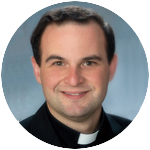
Father Eric J. Banecker
Many people say that we are in the “post-modern age.” But what does that mean? And what was the modern age? Modernity emerged out of the chaos of the Protestant Reformation. After the nations of Europe spent 100 years at war for ostensibly religious reasons, an uneasy tolerance characterized by secular, non-confessional, and/or more tolerant states began to emerge (I say “ostensibly” because the Catholic vs. Protestant thing was often just a cover for geopolitical maneuvering).
Along the way, modernity and liberalism began to merge into one, as political freedom (democracy) and economic liberty (capitalism) were seen as useful in keeping the ghosts of war somewhat at bay.
Culturally, the English and Italian Renaissance served to unite peoples the way a common faith once had. The industrial revolution ignited a major wave of prosperity unseen in human history.
But modernity is over. One can say that it died definitively during World War II, when all of modernity’s experiments failed one by one. The promise of prosperity after economic catastrophe, after all, brought Adolf Hitler to power. All those industrial plants built the material for the guns, gas chambers and firebombs that killed about 60 million people.
[hotblock]
The secular nation-states of Europe demonstrated they were just as bad at keeping peace as the confessional states but much more efficient at killing and wounding soldiers and civilians.
Something strange did happen along the way. From the ruins of the war, a spirit of optimism suddenly emerged like a phoenix from the ashes. Events as varied as the Marshall Plan, the Second Vatican Council, the Civil Rights Movement and the election of John F. Kennedy seemed to signal that things would carry on as before – just better.
Even the major cultural impact of Frank Sinatra, Elvis Presley and the Beatles seemed to show that older forms of music could be integrated into the post-war age.
But looking back from our vantage point, we see that all that was a mirage. The post-war years – arguably culminating in the fall of the Berlin Wall – seem now to be simply the last gasps of modernity. Now, deconstruction is the buzzword of the day. And while there is much in modernity to be critiqued – Pope Francis’ Laudato Si’ does this brilliantly – we cannot simply rip down our entire culture without serious consequences.
With the death of Bob Dole — war hero, master of the senate, dealmaker, presidential candidate and extremely funny person — we are reminded that the optimistic post-war era he represented is over. Instead, we live in a dystopia, a culture without any unifying force.
Have you stopped at any point in the last two years and thought, this – this event, this article, this debate – is really weird? It’s as if we’re living in a Walker Percy novel or “Brave New World” or “The Matrix.” We have all retreated into tribes perceived to be safe, which only further fuels the isolation so many people feel. Americans feel less confident about the future and are less satisfied with their lives.
[tower]
We are jumpy and nervous about everything. The church’s many failures – most spectacularly the sexual abuse crisis – have been both a cause and an effect of these trends in important ways.
So, in a twisted way, it makes sense that our birth rates have fallen precipitously in recent years, while the number of people struggling with depression, anxiety and addiction have risen dramatically. It’s because the unsettledness of dystopia is often too much for people to handle.
I think of this cultural moment as “Dystopia Hills” – that is, a cultural wasteland covered over with McMansions, metaverses and Amazon Prime packages that give the veneer of vibrancy and affluence. But as our nation ages and men like Bob Dole are replaced by no one because of declining birth rates, such affluence will only too easily fail us.
And so, what is left? Many have pointed to St. Benedict of Nursia (not to mention his contemporary devotee, Pope Benedict XVI) as a man for our times. Renewed attention on him goes back at least as far as the famous final paragraph of “After Virtue” and has taken on recent relevance with the work of Rod Dreher and, in a different but important way, Patrick Deneen.
Whatever the specific merits of one or another proposal are, the need for rootedness, a sense of place and limits, and the cultivation of beauty are needed like antidote for a snakebite. Perhaps even more, a return to the truth of the human person and a vision of a good life well lived are essential.
Above all, Benedict represents our desperate need to return to God, to center everything we do on him, to see ourselves as made for eternal happiness. Benedict, of course, was not Savonarola: his monks sifted and preserved much of what we today call “Classical culture,” including from non-Christian sources. They also made use of advances in farming and husbandry in their labora.
So what is necessary is not a return to pre-modern age (which is impossible anyway), but a religious renewal capable of preserving what is essential from the collapse of the modern age.
What would such a discernment look like in our day? It’s a bit murky to say right now, perhaps because we have just begun that process. But Dystopia Hills isn’t such a pleasant place, so we might as well give something else a try.
***
Father Eric J. Banecker is pastor of St. Francis de Sales Parish, Philadelphia.
PREVIOUS: What if every parish was a pro-life safe haven?
NEXT: In shadow of the cross, let us bring help to tornadoes’ victims



Share this story